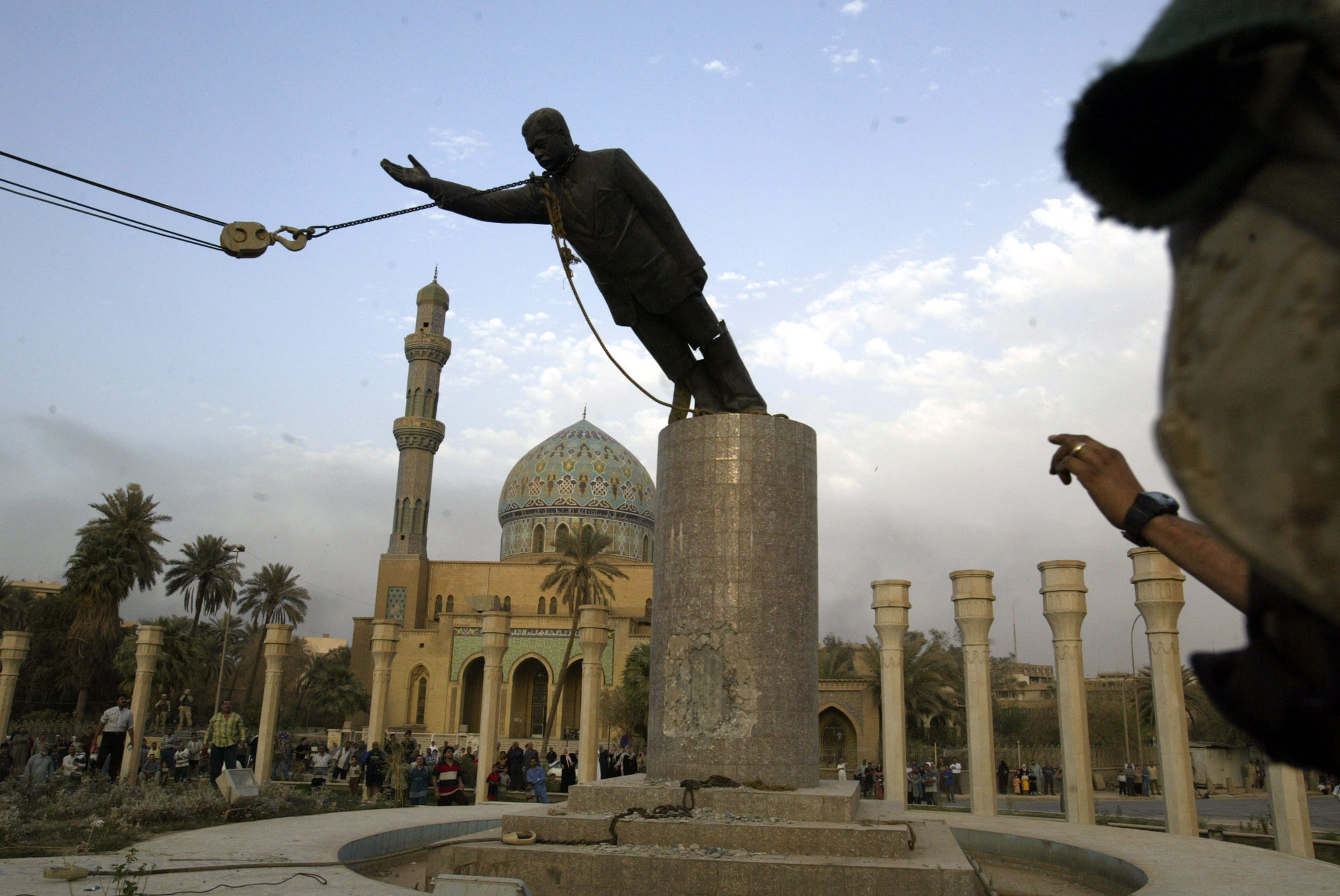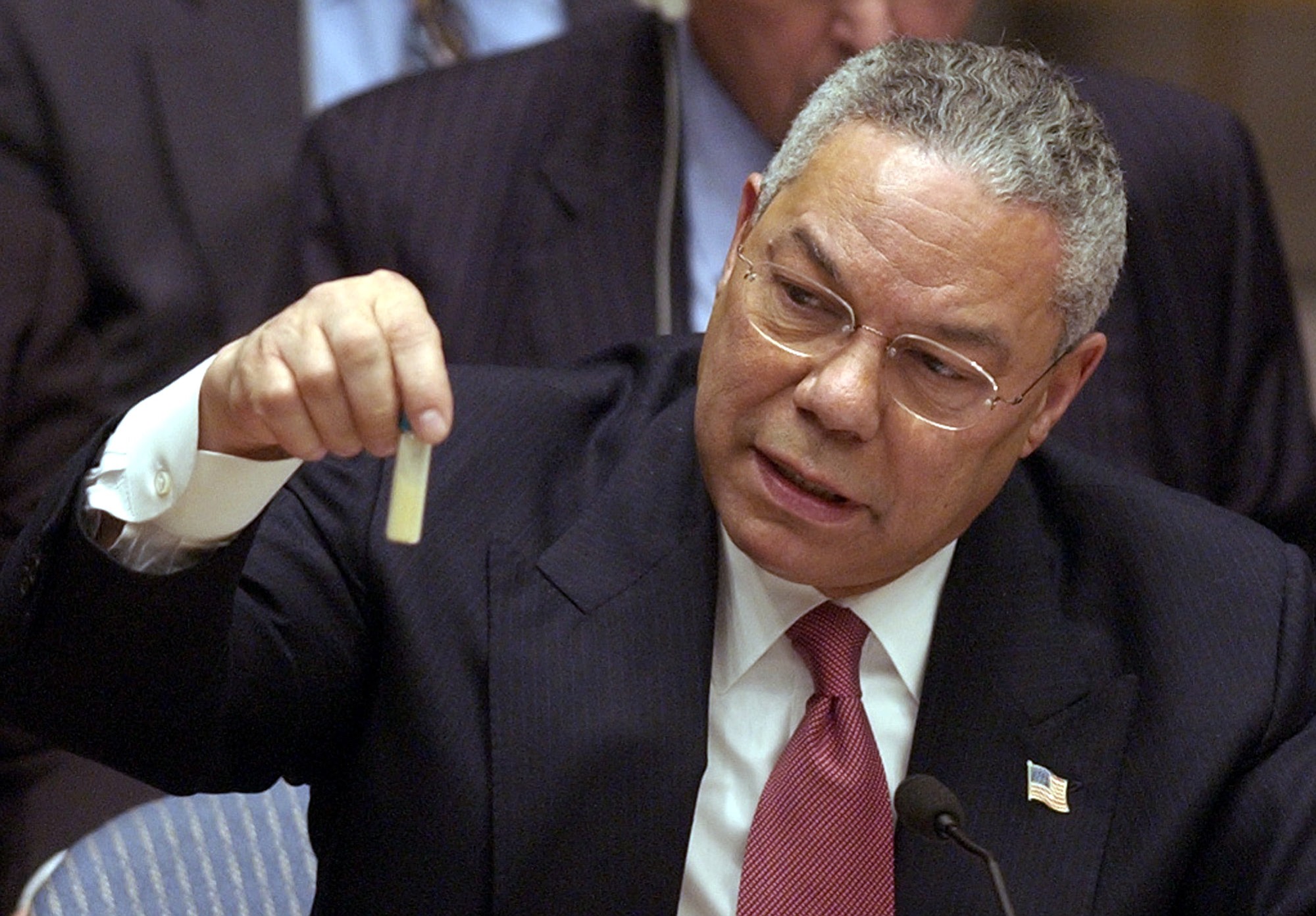WASHINGTON — A decade after the beginning of the U.S.-led war in Iraq, myths and distortions persist about how the conflict evolved into the current incarnation of Iraq as a fragile, highly sectarian state with a domestic political crisis that’s only exacerbated by volatile neighbors Syria and Iran.
The old distortions have cropped up, unchecked, in the adultery scandal that brought down former Iraq commander Gen. David Petraeus and in Senate confirmation hearings for Defense Secretary Chuck Hagel and other officials in the Obama administration.
They are repeated in Washington policy circles and on political talk shows, still accepted as truths long after the press corps became more vigilant in challenging official lines than it was in the run-up to and early days of the war.
Here’s a reality check on some of the most commonly repeated myths of the Iraq War:
Myth: Iraqis greeted U.S. troops as liberators.
Truth: While many Iraqis rejoiced at the ouster of their longtime oppressor, Saddam Hussein, from the outset they expressed trepidation and unease at the sight of foreign forces taking over their country. Only months into the U.S.-led occupation, there were already the seeds of what would become a double-pronged insurgency made up of Sunni and Shiite Muslim Iraqis.
Myth: At least women’s rights have improved with Saddam gone.
Truth: Women enjoyed many more privileges under Saddam’s brutal, secular rule. The U.S.-led invasion ushered in Shiite Islamist rulers – most of whom had spent years sheltered by the theocracy in neighboring Iran – who immediately set about rolling back women’s rights in matters of family law. The lack of security since Saddam’s ouster also has been used as justification for keeping women indoors, shutting them off from political and civic life. The Shiite and Sunni militants who have roamed Iraq since the invasion have targeted women’s advocates.
Myth: The Sons of Iraq project, also called Sahwa or “Awakening,” was a successful strategy to isolate extremists in the battle theater.
Truth: The Sons of Iraq was a U.S. paramilitary program that took Iraqi foot soldiers and tribesmen, including many who had fought the United States as nationalist insurgents, and armed them to help in the fight against al-Qaida in Iraq, to highly mixed results. Moreover, tribesmen told reporters they had tried for months before the program began in late 2005 to interest the U.S. military in such an alliance, only to have their requests ignored until the Americans faced dwindling options for making headway against al-Qaida in Iraq.
Myth: The bombing of the golden-domed al-Askari shrine in Samarra in February 2006 touched off the brutal sectarian war that would engulf Iraq for the next two years.
Truth: While the bombing certainly accelerated the pace and scope of the internecine bloodshed, a low-intensity civil war was under way long before the blast, with a spate of revenge killings and other violence that set the stage for the wider conflict to come.
Myth: Sovereignty was restored in 2004, with the U.S. occupational authority handing over power to interim leader Ayad Allawi.
Truth: A brief ceremony in June 2004 dissolved the Coalition Provisional Authority, the disastrous occupation command that was widely derided as Can’t Produce Anything. However, foreign forces were under a mandate to remain in the country and U.S. officials still oversaw almost every aspect of transitional Iraq, from orchestrating the trial of Saddam to rebuilding key ministries. In one of the more notable examples, the CIA retained control of Iraq’s national intelligence files after the handover because the Bush administration feared that the country’s new leadership would share intelligence with its allies in Iran.
Myth: The “surge” strategy of sending 20,000 additional U.S. forces to Iraq in 2007 was the catalyst for a turnaround in the war, bringing enough calm to the country for the U.S. military to stay on schedule for withdrawal.
Truth: The surge was only one factor in the temporary abating of violence at that time. It was successful only in tandem with several other important events, chiefly the unilateral cease-fire of the Shiite cleric Muqtada al-Sadr’s Mahdi Army militants, previous military successes against some extremist Sunni leaders and the near-total sectarian cleansing of Baghdad neighborhoods.
Myth: As of the end of 2011, there has been a full U.S. withdrawal from Iraq.
Truth: Iraqi and American officials couldn’t reach an agreement on keeping some U.S. forces in the country for, say, training and in advisory roles, but that doesn’t mean there’s not a substantial American presence remaining in Baghdad. At the time of the withdrawal in 2011, the State Department said that up to 17,000 diplomatic personnel would remain, supported by more than 5,000 private security contractors. That led to concerns by many U.S. officials, including then-Sen. John Kerry, D-Mass., who’s now the secretary of state, that the U.S. government was simply hiring private mercenaries for the jobs that service members once filled.




